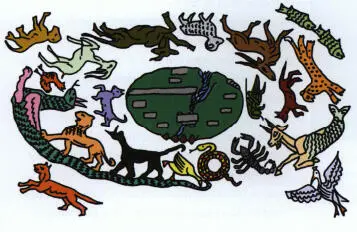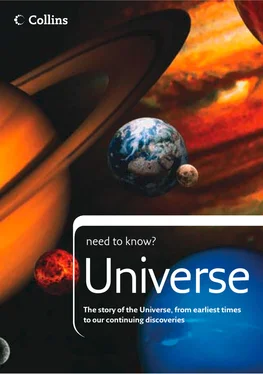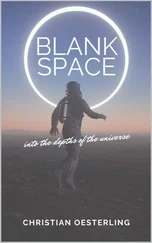The science of astronomy can trace its roots back thousands of years to Mesopotamia, a land bordered by the rivers Tigris and Euphrates in modern Iraq.
Mesopotamia actually means ‘land between two rivers’. The region is also known as ‘the fertile crescent’, its fertility being perhaps the source of the biblical Garden of Eden. Here, from around 4000 BC, the first complex human civilisations grew: first Sumeria, then the kingdoms of Babylon and Assyria.
Omens in the heavens were deemed of tremendous importance to the rulers of ancient Mesopotamia – all events visible in the skies were believed to take place for a reason, and it was the job of the astronomer-priests to note such events, predict them where possible and to interpret their meaning. Astronomical observations were deemed so important that they were preserved on clay tablets imprinted with cuneiform script – a form of writing made with narrow wooden scribes with tapered ends.
A flourishing sky lore also developed in Sumeria, in which ancient myths and legends were projected into the heavens, creating some of the constellations with which we are familiar today. Zodiacal constellations such as Sagittarius, Scorpius, Capricornus, Leo, Gemini and Taurus – areas of the sky through which the Sun, Moon and five planets were observed to travel – were devised by the Sumerians around 5,000 years ago. In addition to having a spiritual significance, the constellations had a practical use – their visibility throughout the year (notably the times of the year when certain constellations were first seen rising or setting) was used to mark agricultural seasons.
A calendar based on the Moon’s cycles was used. Each month began with the first sighting of the narrow crescent Moon at sunset, and 12 lunar months made one year. Since 12 lunar months is 11 days short of a solar year (365 days), the Sumerian calendar was synchronized with the solar year by adding a leap month every three or four years.
The Babylonians adopted and added to ancient Sumerian sky lore, their calendar and scientific knowledge. Hundreds of Babylonian clay tablets noting scientific and astronomical subjects have been discovered. The Babylonians acknowledged the ‘morning star’ and the ‘evening star’ to be a single object –the planet Venus. Lunar eclipses were capable of being predicted with reasonable accuracy.

Babylonian world map, early 5th century BC on a clay tablet, shows a flat, round world with Babylonia at the centre. Eighteen of the animal constellations are named on the tablet.
Ancient Egyptians paid little attention to observing and recording the movements of the Sun, Moon and planets. Instead, special significance was attached to certain bright stars and constellations.

The ceiling of the Temple of Hathor at Denderah (above) depicts a magnificent series of ancient Egyptian constellations (illustrated, top).
By chance, the annual flooding of the River Nile – so vital to irrigating the crops that grew near the river – happened to coincide with the first sighting of Sirius, the sky’s brightest star, as it rose in the east before dawn. It was deemed that the start of each new year would occur with the first new Moon following the reappearance of Sirius. When the system was adopted around 3,000 years ago, the rising of Sirius (known to the Egyptians as Sopdet) just before sunrise took place in early July; it now it takes place around three weeks later because the Earth’s axis points to a slightly different place today than it did in those far off times.
A catalogue of the heavens made in 1100 BC lists just five major constellations. In addition, 36 smaller star groups enabled the time to be calculated during the night – helpful tables allowing these calculations to be made have been found inscribed on a number of coffin lids. Osiris, the god of death, rebirth and the afterlife, was represented by the bright, familiar constellation of Orion, and the swathe of the Milky Way represented the sky goddess Nut, who gave birth to the Sun god Ra each day. Circumpolar stars – those stars near the north celestial pole which never set from Egyptian latitudes – were deities known as the ‘Imperishable Ones’.
A collection of large stone slabs recently discovered in Nabta in Egypt (in the Sahara Desert) represent the world’s earliest known astronomically-aligned construction. Dated between 6,000 to 6,500 years old, it is thought that the megaliths were erected by the direct ancestors of the builders of the pyramids, in what was once a fertile area. Climate change caused the residents of Nabta to move eastwards into the Nile Valley, where the great pyramids at Giza were built some time between 2700 to 2500 BC. Astronomy was used to precisely position the pyramids, since their sides are aligned almost exactly north-south and east-west. The fact that they are more accurately aligned east-west suggests that the main positional sighting was made by observing the rising and setting points of a star due east and west; the star Acrab (Beta Scorpii) best fits for the era of the pyramids’ construction. It is likely that the positions of the three great pyramids were meant to reflect the belt stars of the constellation of Orion.
A belief that cosmic events and planetary positions influenced human affairs is remarkably absent throughout most of ancient Egyptian history. Astrology did not figure until the Ptolemaic period, from around the 3rd century BC, when the culture was being influenced by nearby civilisations. Perhaps the best star map depicting astrological constellations can be found on the ceiling of the Temple of Hathor (see left, page 30), constructed in the first century BC.
The three large pyramids at Giza appear to mimic the position of the three belt stars of Orion.
Megaliths and medicine wheels
An awareness of the Universe, and a need to remain tuned in to its cycles prompted ancient cultures in Europe and America to construct earthworks and stone buildings which were aligned with celestial events.
must know
Little is known about the builders of these sites, but it is clear that they attached great importance to observing the Universe and perhaps being able to predict basic celestial events.
Megalithic monuments dating back 5,000 years can be found across parts of western Europe and the British Isles. Weathered by the elements and damaged by people over the millennia, these battered grey stone circles and other prehistoric monuments make an eerie sight, but their former grandeur can be imagined. Perhaps the most famous of these ancient sites, Stonehenge, on the windswept Salisbury Plain in southern England, dates back to at least 2950 BC. Of unknown religious and ritual significance, Stonehenge and other megalithic constructions appear to have been used to make astronomical sightings of the Sun and Moon and to provide a means to calculate future solar and lunar solar events.
Читать дальше














